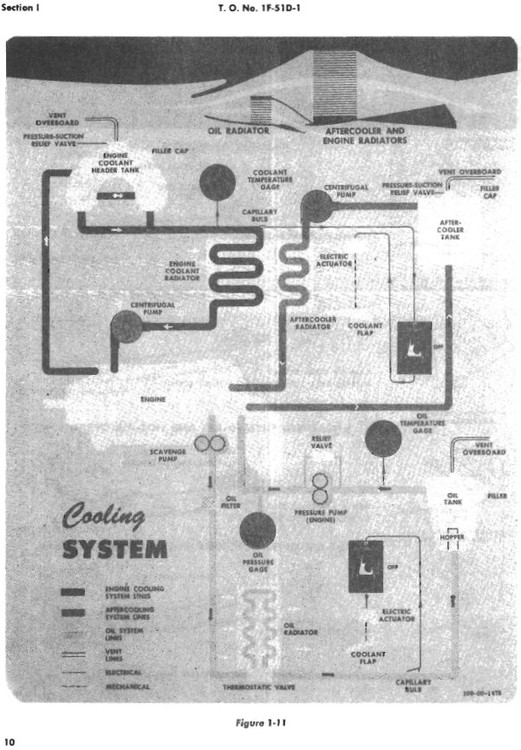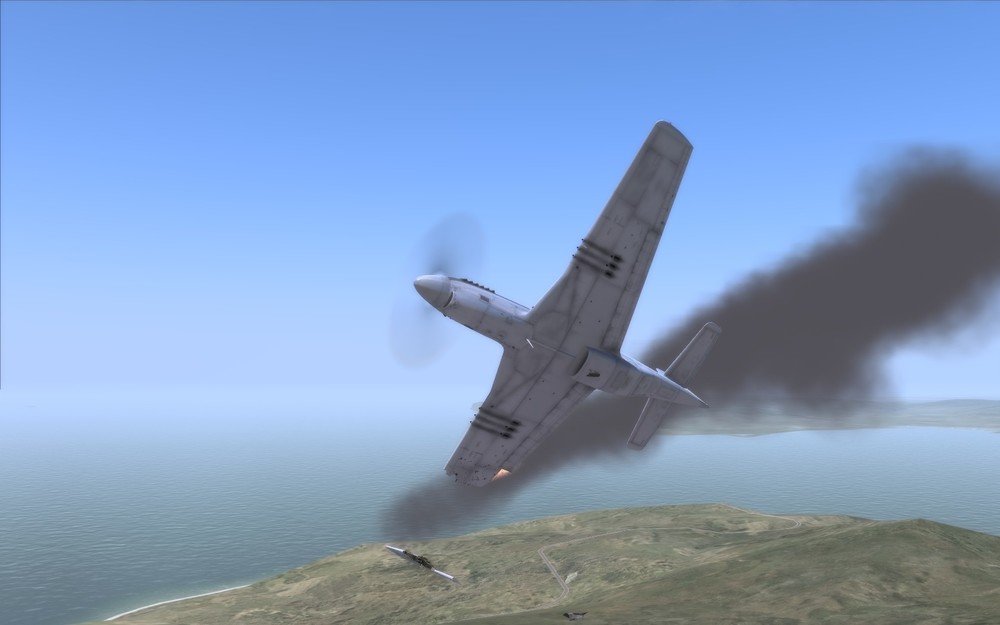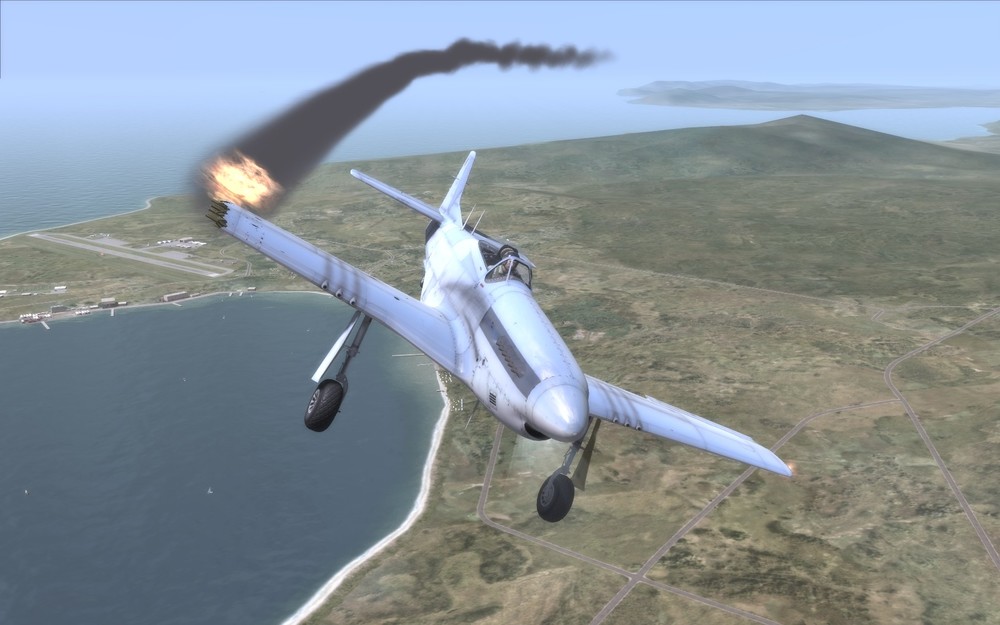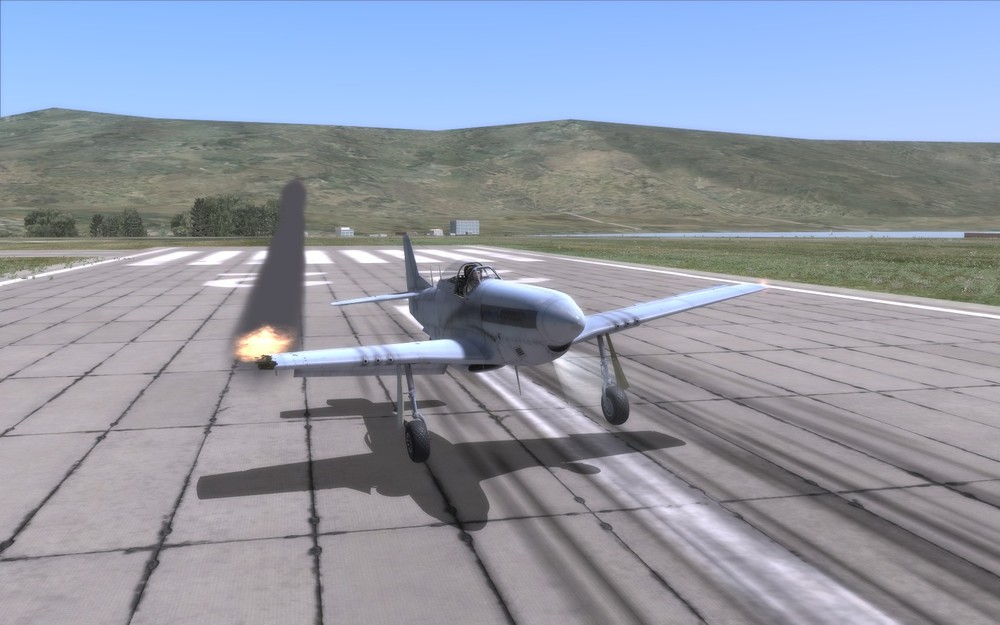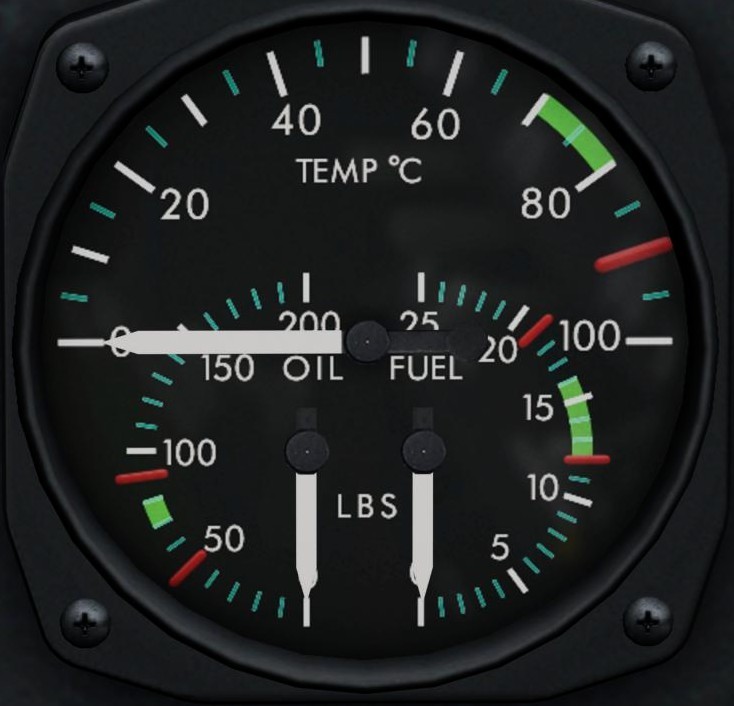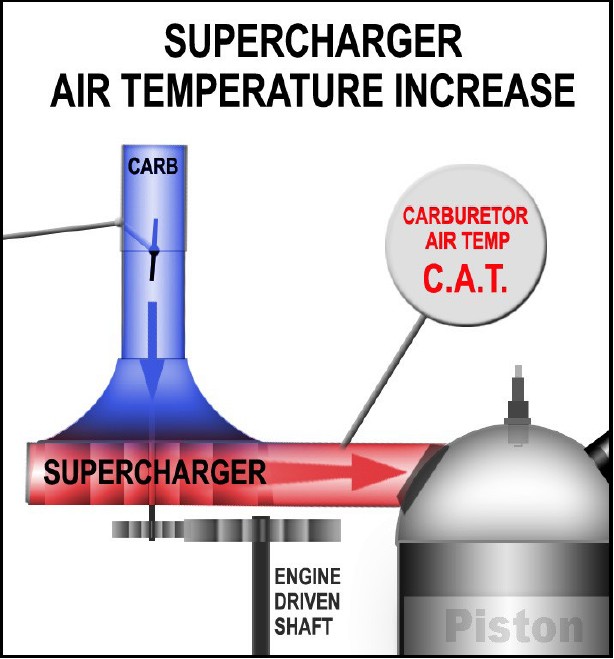-
Posts
678 -
Joined
-
Last visited
-
Days Won
2
Content Type
Profiles
Forums
Events
Everything posted by billeinstein
-
I tried several times of the G limit today. I found the aircraft will never servive a 8G maneuver. The G indicator never goes higher than 8G. According to the manual page102: "The P-51D structural load limit is +8G and -4G (plus a standard safety factor of 1.5)." The safety factor of 1.5 looks like not simulated in the sim. I think this factor means a higher than 8G maneuver will have a chance to damage the aircraft. This chance will increase if the G goes up. And when it reachs 12G, the chance shall be 100%.
-
i found the oil temp gauge should has the senser after the oil tank outlet, not after the radiator. The pic is from the maual of F-51D.
-
Air goes into the fuel system, and will kill the engine.
-
just tap the W key
-
Er, the fuel intake...There supposed to be a fuel pump in the begining of the fuel line. Can we select the drop tanks to have sustained fuel supply during the inverted flight?:D
-
The feeling of the unbalance is quite small. Much smaller than that of drop one bomb and flying with the other onboard.
-
There is little to be said. Just fast forward the trk to about 1100s and watch. It's starting from the 1189s of the trk, when I testing the max G of the aircraft. Another interesting thing is the log said my right wing guns were failed when the wing was breaking, but I could still fire them after that. client-20121127-223457.rar
-
One more bug here. I tried more than 10s of inverted flight. The fuel pressure will drop, not the oil pressure. But the manual said on page 38: "However, when the aircraft is in inverted flight, the oil pressure falls off, because no oil reaches the scavenger pump. For this reason, inverted flight must be limited to 10 seconds." I believe the injection-type carburetor will not cut the fuel in inverted flight longer than 10s.
-
That's OK. I just find these two docs and will read them tomorrow. http://hdl.handle.net/2060/20090026298 http://hdl.handle.net/2060/20090022371
-
Is that mean the oil pump will stop as soon as the engine died and the sensor is in the oil radiator?
-
The oil temperature changes too quickly in certain cases. For example, when the engine died, the oil temp will drop from the redline to zero in several secends. The tail slide maneuver with military power will cause overheat of the engine. The engine will have a strange sound and will die if not reduce the power immediately. The oil system has 21 U.S gallons of capacity, and every degree(K) change in temp needs about 132kJ of energy.
-
Maybe more than 10s of zero G flight
-
-
I know why you can see the tracer like a moving dot, not a short bright line. Your view piont is tracking the tracer. Your head and eyeballs may turn and reduce the relative angular velocity of the tracer unconsciously. The sim have a static camera, like fixed eyeballs, and the high speed moving light object will show a dash in the view. Further more, if a better looking effect is needed, the dynamic fuzzy should be the one, when the view is turning. (And the different parts of cells on your retina may have different reaction time. You will find the different lenth of the dash when it is in different part of your view.)
-
Not agree. Can you see every blade of the propeller clearly with your eyes when the RPM goes up to 3000? The tracers doubled the speed of that.
-
They are two totally different worlds. You need learn more about the softeware behind these sims. You will know what is possible and what is impossible after that.
-
And that's "a simple but not too simple planeset" you need I think. Simpler than DCS: P-51D, but more complex than IL-2.
-
Just try Clod
-
On the manual page 60: "The horizon knob is used to adjust the horizon level." However it's turning the "Aircraft symbol" in the sim now. So you can never adjust the Flight Indicator correctly on the ground after uncaging it.
-
Lucky is needed. The AI has a almost fixed firing range in heads on, and a fixed way of evasive. You may try many times to find a good firing and evasive chance. But a single hit do little damage on AI. You should concentrate your fire at one part of the airframe. Otherwise, maybe more than 100rounds hits will be needed to kill an ace AI.
-
"Hot air should not be used above 12,000 feet. At high altitudes its use affects the carburetor’s altitude compensation and may result in an overly lean fuel mixture." -This means the C.A.T Indicater is useless over 12000ft. Nothing else (except fire) can warm up the intake over 40C at that altitude. And if I lose the coolant in the after-cooling system, the C.A.T Indicater just reads cool, and no gauge will warn me about it untill the engine failure. That's too bad...:cry: There's a "rumor" said that the merlin engine of P-51D inject the fuel directly into the blower, preventing it from icing...
-
Follow your point, the hot air control shall work as a carb heater, and the C.A.T Indicator is for ice detection. But why the high temp limit is 40C for the intake? I'd rather think it measures whether the intercooler and aftercooler work fine or not. If they failed, temp will rise and the engine shall die. I'm Still seeking info to prove this wrong or not.
-
Er, the Carburetor Air Temperature supposed to be this:(picture from A2A sim). "Supercharging Heats The Air The downside to supercharging is heat. The more you compress air, the more the temperature increases, therefore more supercharging = higher CAT temperatures. The increase in temperature can be extreme. -40 degree air coming into the intake system can be 100 degrees hotter after it exits the supercharger. This is where your INTERCOOLER comes into play. The INTERCOOLER is a heat exchange, and is basically a radiator taking heat out of the incoming air. Use your INTERCOOLER FLAPS to transfer heat out of your intake manifold and out the flap doors. The more you open your intercooler flaps, the more heat you remove. Use your intercooler flaps to keep CAT temps nice and low for a strong and healthy running engine." And in DCS manual: "The AN5790-6 Carburetor Air Temperature Indicator shows the temperature of the air running through the carburetor air scoop. The gauge indicates temperature in degrees Celsius (°C) and is graduated from - 70° to 150°C. The face is scaled to 10°C. The green range indicates normal operating temperature of 10° - 30°C. The Red Line indicates maximum temperature of 40°C."
-
The weather in DCS test is the default setting: at sea level 20C degrees and 760mmHg QNH, so the altitude in F2 is the same of the pressure altitude. I believe the historical test is based on the standard pressure altitude, otherwise the results are meaningless. And the difference can't be 5000ft. One other thing is about Carburetor Air Temperature Indicator. It is never in the green when fly high enough, and just becomes a Outside Temperature Indicator. Pressurized air shall have a certain temperature rise.


